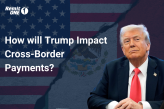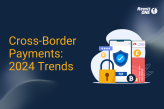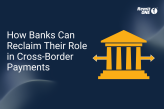Mobile Money in Africa March 9, 2021

Africa is something of an anomaly in the developing world. It’s a continent that many people forget is not a single country but 55 individual countries with dozens of currencies. It’s also a continent where around 66% of the adult population remain unbanked. However, while more than half of the continent has no access to a bank account, the mobile economy is booming. Indeed, Sub-Saharan Africa is the world’s fastest-growing mobile phone market. For the remittance sector, this poses a pretty enticing opportunity.
While the typical customer living out in rural Kenya might live several days away from the nearest bank, they are likely to have direct access to a mobile phone that can be used to send and receive digital payments. This is why the mobile money systems in the region have spread so fast. But how will MTOs cope with increasing digitisation and compliance issues as more customers go online and start using mobile apps to send their money?
To dive deeper into the current mobile money climate in Africa, RemitONE Associate Sales Director Oussama Kseibati recently hosted a webinar attended by esteemed panelists with expert knowledge of the regional remittance landscape. Muhammad M. Jagana, CEO of Kuringo, Sidharth Gautam, Head of Sales at AZA Finance, Leon Issacs, Managing Director of DMA Global, and Linus Adaba, Head of Group Remittance Distribution at Ecobank lent us their thoughts and feelings on compliance and mobile money in Africa in the wake of the COVID-19 pandemic.
Muhammad M. Jagana
In larger cities and towns, there really is no issue when it comes to mobile adoption. Where we’ll face significant challenges is in the last mile of the inclusion journey; the towns or villages that are maybe 200 miles away from a major city.
How do you onboard these clients so they can use mobile money in their local shops and businesses and how will a small local shopkeeper take that payment and convert it into cash to pay their supplier? It’s one of those situations where unless everybody goes digital at the same time, there’s always going to be those at the bottom of the ladder missing out.
For these people, some of whom might not even be aware of the benefits of mobile money, it’s going to be a case of not only education but ensuring that regulators can make it easier for them. For example, in the Gambia, we have two mobile money operators and those two operators are incompatible with one another because they are direct competitors.
Rather than trying to shoehorn everyone onto the same network, we need to ensure there are regulations in place that allow for integration between different networks. It’s up to the regulators to figure out the logistics, of course, but the banks and agents need to play their part too. Something akin to the PSD2 regulations would make the most sense but realistically that’s a rather large hill to climb.
Sidharth Gautam
I completely believe that digitisation and mobile adoption is the key going forward in Africa. At the moment, cash is still king but there is a sea change on the horizon. There are hordes of challenges standing in the way of this change, of course. There are liquidity issues even on the cash pickup front, particularly in Western Africa, as well as the KYC process to sort out, user interface and customer satisfaction. It all comes into play.
There are a lot of plates that need to keep spinning, so to speak. And the regulator has to be on top of it all; the engine leading the train. It’s not an easy task to bring the offline to online puzzle together but it’s not insurmountable either.
Linus Adaba
Personally, I’ve always enjoyed working things into silos and that’s partly how I see mobile money adoption in remittance filtering through into the African market. I see one silo of mobile money that is state-led and the other that’s more private or enterprise led and we are seeing so much more innovation on the private enterprise side because of the lack of regulation.
In order for the state-led operators to catch up, they need to start investing in better compliance tools and putting good compliance managers in place. This way they can ensure people who are using mobile money are at the level of KYC that regulators expect.
When we’re talking about the last mile of the inclusion journey, as Muhammad mentioned, telecommunications companies are selling SIM cards even in the most remote villages, so the infrastructure is definitely there. The problem is that they need to subject themselves to the central bank in each country and there is a lot of technology that’s allowing nimble KYC to be done.
For remittance businesses, meanwhile, there needs to be something of a threshold. Because if it’s just remittance across borders, the full KYC protocol is simply not necessary. In this case, there could perhaps be some sort of a ‘KYC light’ solution. I also see a strong headwind in countries where you have a national ID system in place and we’re currently looking at ways to link this ID with SIM cards to help with faster and better KYC.
Oussama Kseibati
To lead on from Linus mentioning SIM cards and national ID. I think it would be hugely beneficial for the African mobile money market if there was a database such as PSD2 in Europe. With this database in place, once you’ve reached a certain compliance standard with your systems and technologies and you’re ticking the right boxes, doors can open for you automatically.
If there was a centralised database working across countries all linked to SIM cards, you’d be able to use that to do KYC. But what would need to happen first is for a standard to be implemented that will make it easier and more open for people to trade with each other. And that probably isn’t going to happen anytime soon.
For now, instant payments with instant delivery is the way forward for the region I feel. M-Pesa is a positive sign of things to come. It was a major success for Africa throughout the pandemic and the adoption of mobile wallets is continuing to rise in general. Indeed, digitally ready players have seen business growth through the roof as people are migrating towards mobile payments to remain safe from the virus. However, there has to be action in terms of regulation and regulatory frameworks.
Reaching the Great Unbanked
Everything is moving towards the digital market and many unbanked customers are using mobile platforms. That large influx and the onboarding that needs to be done is going to require a lot of compliance and a lot of work but it’s almost certainly going to result in faster, better and more affordable remittance for Africa. Given the fact that remittance rates are so high in the continent right now thanks to a heavy reliance on cash payouts and physical infrastructure, that can only be a good thing.
To read more on what our panellists had to say regarding the more specific challenges facing mobile adoption in the region, click here for our companion piece or check out the full webinar here. If you are a money service business interested in expanding into the region, meanwhile, RemitONE is an award-winning provider of MSB technology.
If you need support with all your operational needs please contact us by emailing marketing@remitone.com to see how we can support you.
Related Posts
-

How to Build a Leaner, Smarter Money Service Business in 2025
In an era of rapid regulatory change, rising customer expectations, and digital disruption, how can money service businesses (MSBs)—companies that…
May 22, 2025 -

Trump’s Threats to Cross-Border Payments: What It Means for Your Business
It’s been a short while since Trump stormed back into office, and he’s already shaken things up with his hard-hitting…
May 22, 2025 -

Unlock Faster, More Secure Payments with RemitONE’s Open Banking Solution
We’re excited to introduce the latest enhancement to our RemitONE Money Transfer Platform: the RemitONE Open Banking Solution. Competitively priced…
January 31, 2025 -

How to Expand Your SEND Operations in the UK and Europe—Without the Regulatory Hassle
The remittance market in Europe is valued at €133.7 billion annually, with the UK market contributing an additional £23 billion.
January 31, 2025 -

The Top 5 Cross-Border Payment Trends That Shaped 2024
What a year it’s been for the world of payments! From breakthroughs in tech to surprising shifts in consumer behaviour,…
December 19, 2024 -

How Banks Can Reclaim Their Role in Cross-Border Payments with RemitONE
Banks, once the cornerstone of international payments, are finding themselves sidelined. Senders and receivers have now joined forces, pushing banks…
December 18, 2024